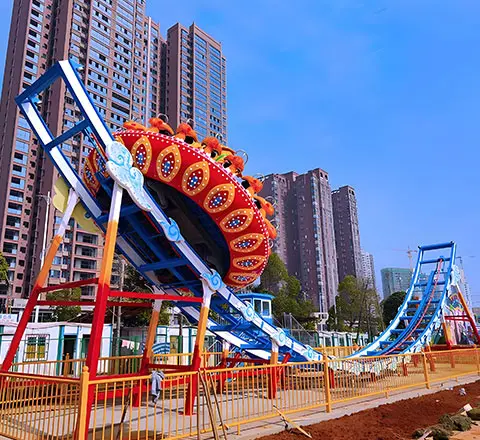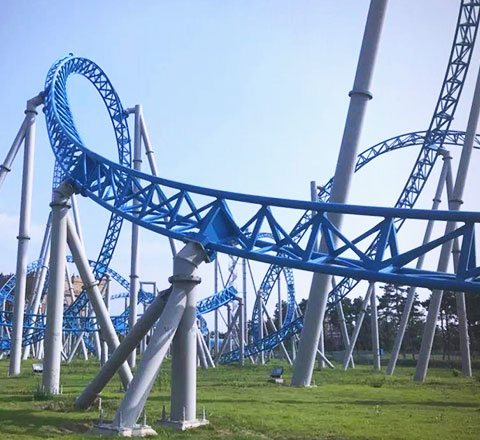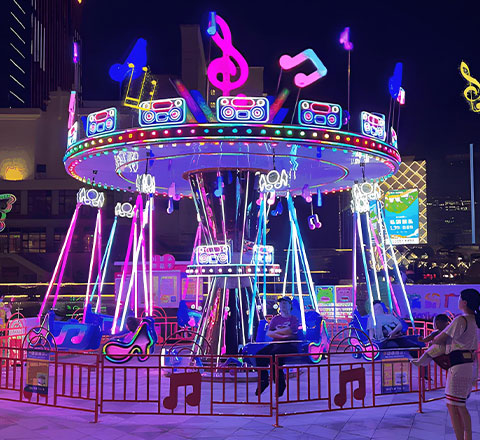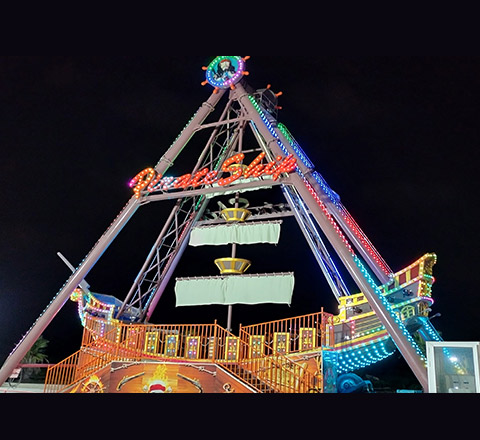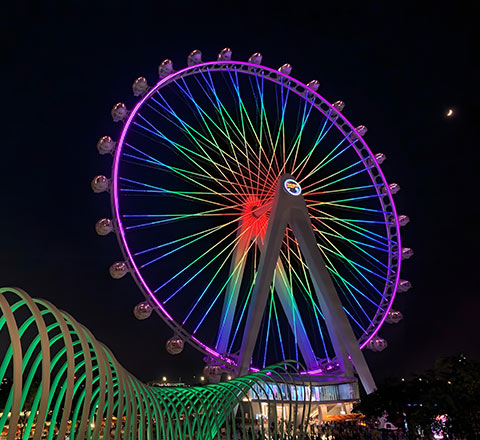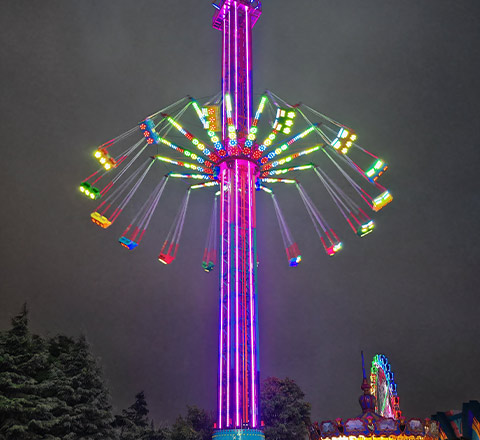Designing a theme park is an ambitious and exciting enterprise. Whether it’s to attract new visitors to an area, entertain a built-in audience or fulfill a life-long dream, this type of endeavor requires a healthy amount of planning, preparation and passion. Your amusement parks are carefully designed by Carnee Amusement, deliberately crafted and fine-tuned to bring exciting attractions to guests on a daily basis. In this guide, we’ll dissect the key features of theme park planning, attraction design and park layouts. By the end, you’ll be one step closer to opening your very own amusement park!
Planning An Amusement Park Layout:
Before you begin drawing up schematics for rides, restaurants, and parking lots, you first need to create a foundation for your future theme park. Laying the groundwork in the planning stages can avoid preventable pitfalls down the road. Here are the five key factors for planning a theme park.
1. Choose an Amusement park theme
True to its name, a theme park needs to have a theme! Without one, you’re more or less lumping thrill rides and amusements in one central location. Theming, on the other hand, lends a sense of cohesiveness to your park. Essentially, it is the very first attraction you’re offering guests — the opportunity to immerse themselves in a new world that is full of stories, thrills and fun.
Sometimes the right theme is upfront and concrete. Other times it evolves as you build up the park and guests offer feedback. As you brainstorm the theme for your park, find the middle ground between broad and specific. If you’re too vague, you may confuse your guests or lose some storytelling integrity along the way. If you’re too niche, then you may end up pigeon-holing future projects. Here are some typical themes to help get you started:
- Adventure: Thrills rides and action
- Nature: The natural world, animals, science and conservation.
- Fantasy: Myths, legends, fictional lands, heroes and villains.
- Historical: Period-based, reenactments, costumed, day-in-the-life and educational.
- Film: Based on movies, the art of movie-making and celebrity.
Settling on your theme will help you find your focus and prepare you to hone in on your park design and park experiences.
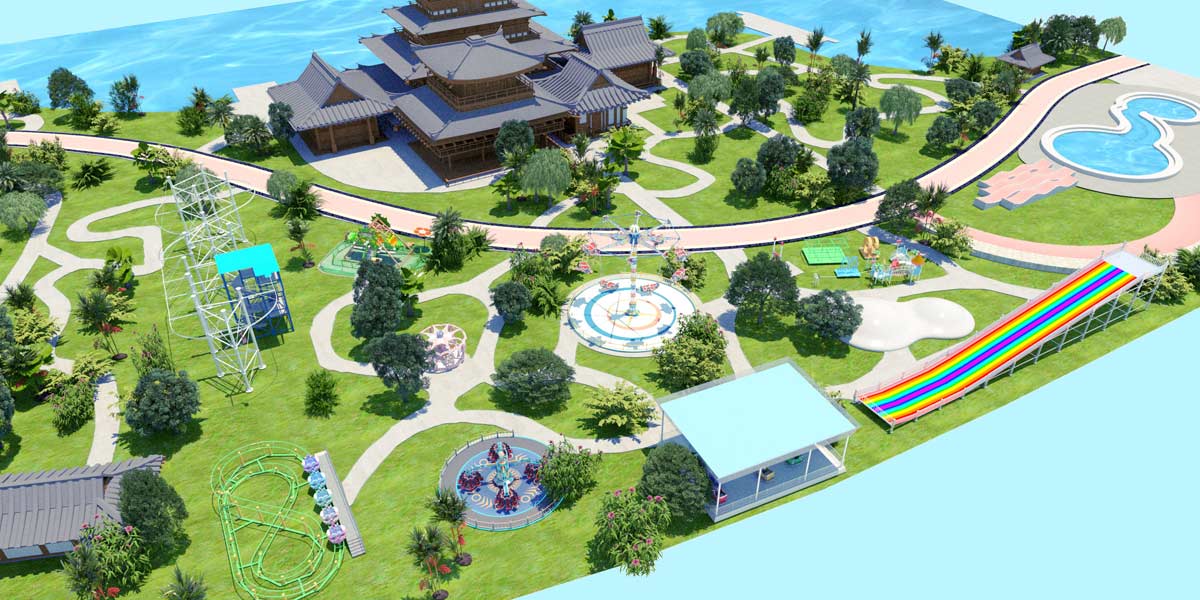
2. Finalize a Budget
Finalizing a budget is what separates the dreamers from the doers. Developing an amusement park is a serious undertaking that needs funding to turn it into a reality. It’s okay if you don’t have thousands or millions of dollars in capital sitting in the bank. Investors are a great option for bringing your park to life. In order to win them over though, you’ll need to show them how you plan to spend their money to build the park and how you plan to become profitable. Conducting research will go a long way in helping you estimate an accurate figure to get started. Here are some expenditures to keep in mind you finalize your budget:
- The cost of buying or leasing property to build your park.
- Salaries for engineers, designers and contractors.
- Labor and materials for the attractions.
- Choose the most suitable amusement equipment, such as drop tower rides, pirate ship rides, ferris wheel, pendulum rides, flying chair, roller coaster, carousel rides, bumper cars…
- Marketing and advertising expenses.
- Food and merchandise overhead.
- Employees and staff to run the park.
Do the leg work on the front-end of this process. Be sure to dig into things like expected ticket prices, project feasibility and projections too!
3. Find a Location
If you don’t have a place to start building an amusement park, then you’re dead in the water. Work with a reliable commercial real estate agent to scope out possible tracts of land in your desired location. Remember, you’ll need space for more than just rides and stores. There is a substantial behind-the-scenes presence at most theme parks, from maintenance to staffing rooms to security. You may also want the opportunity to expand your park over time, so investing in the land could be a great asset in the long-run.
When you find some suitable locations, be sure to also ask about any sort of required permits or ordinances that may prevent you from running your park well. Inquire about the land composition and local ecosystems as well. Is it prone to flooding? Is it swampland? Is it home to an endangered species? Leave no stone unturned. This will be the permanent home of your park. Pick a good one!
4. Evaluate Your Market
Now that you’ve determined your location, it’s time to evaluate the market you’re targeting. Understanding your prospective guests will help you make profitable decisions. Everything you do should be to enrich their experience, bring them back for more and encourage them to tell their friends. If your project is too narrow and niche for the necessary market, then that can guide you toward expanding your offerings or narrowing your scope.
Consider the market local to your park, as well as the location of your ideal guests. Find out how far they are willing to travel, if your location will accommodate them appropriately and what sort of features they’ll expect once they arrive. Other questions to ask is whether their household income can afford visits to the park, how long they’re likely to stay in the park and what attractions they prefer.
5. Brainstorm Attraction Ideas
Now that you have your theme, budget and location, it’s time to dream up some attractions! This is where theming becomes practical. It serves as the fulcrum for all your attractions and will guide you and your team as you build out the rest of your park. Start off by brainstorming obvious scenes, props and motifs associated with your theme. For instance, if you chose a pirate-themed park, you could start off with some obvious associations — ships, treasure maps, doubloons, skulls, flags and all things nautical. You could also imagine a storyline, characters or even an objective like a quest. Using this framework, you can start to imagine the possible rides and features your park will offer. A swinging ship ride? Crew members in pirate clothes? A pirate-themed show? Swashbuckling music? Park maps designed like treasure maps? You get the idea.
Another option is to start off with your location and budget. Predetermine how many rides you’d like to incorporate, as well as other attractions, staff quarters and food services you’ll need. How many roller coasters can you afford or fit on the property? Create a generic grid and then craft the specifics of each ride into the framework you’ve already put into place.
Be sure to consider the guest experience as you brainstorm. Will your market want to hop from roller coaster to roller coaster or are they more interested in a varied experience? If you’re designing a park meant for the whole family, then are there enough age-appropriate attractions for all potential guests? Map out the perfect park day for your ideal customer and see what you can build for them.

